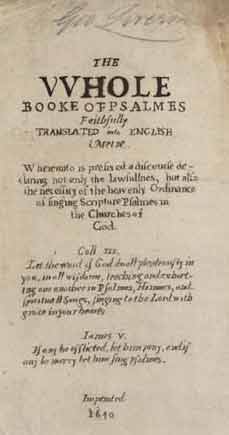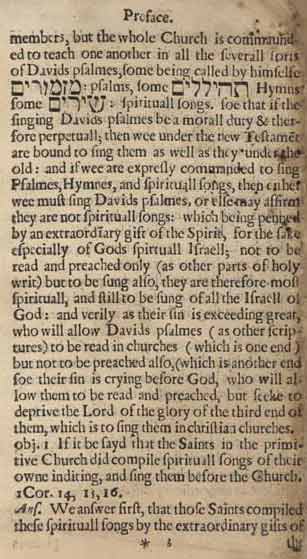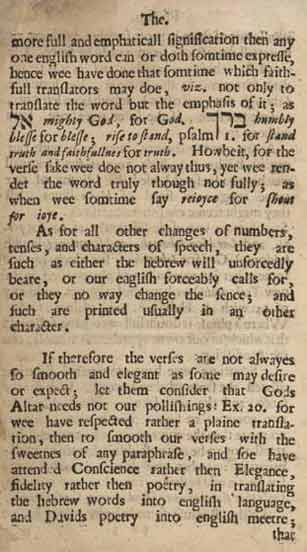In the New World: Jews Come to America
The first mention of the discovery of the New World and the first description of it in Hebrew literature is in Iggeret Orhot Olam (A Tract on the Paths of the World), Venice, 1586. It was written in 1524 by Abraham Farissol (1451-1525), a contemporary of Columbus. Bible scholar and polemicist, he served as a cantor in the Ferrara synagogue and was also a copyist of manuscripts. Aware of the world about him and much taken by the great voyages of discovery, Farissol turned his attention to geography and cosmography. His small volume is divided into thirty chapters which deal with "the distant islands recently discovered by the Portuguese; on the River Sambatyon and the Jews who lived beyond it (i.e., the Ten Lost Tribes); the boundaries of the Land of Israel ... and the earthly Garden of Eden." In Chapter 29 he reports on Columbus's discovery of the New World in 1492:
It is now an established fact that the Spanish ships which were sent on an expedition by the King of Spain ... almost gave up hope of ever returning .... But divine providence had decreed for them a kinder fate than death amid sea .... Those at the topmost mast discerned a strip of land ... When they had sailed along its shores ... and saw its exceeding large size, they called it because of its great length and breadth, "The New World." The land is rich in natural resources. They have an abundance of fish ... large forests ... teeming with large and small beasts of prey, and serpents as large as beams. The sand along the shores of the rivers, contain pure gold ... precious stones ... and mother of pearl.
Farissol attempts a crude "map" of the New World, no more than lines forming a shieldlike figure and some typographical markings. Orhot Olam was translated into Latin, published in Oxford, in 1691, as Tractus Itinerum Mundi, and was republished many times in Hebrew. The most notable edition is that of Prague, 1793, which contains interesting illustrations.
 |
In the Rare Book and Special Collections Division are two books bearing the same title, Jewes in America, by the same author, but published in London ten years apart, in 1650 and 1660. The author, Thomas Thorowgood, a British divine, has as the subtitle of the first edition: "Probabilities that the Americans are Jewes." These are the first of many books and articles identifying the American Indians as the descendants of the Ten Tribes of Israel, who were exiled by the Assyrian monarch Sennacherib in 722 BCE and "lost."
Thorowgood argues that, "The Indians do themselves relate things of their Ancestors suteable to what we read in the Bible ... They constantly and strictly separate their women in a little wigwam by themselves in their feminine seasons ... they hold that Nanawitnawit (a God overhead) made the Heavens and the Earth." He further proposes that, "The rites, fashions, ceremonies, and opinions of the Americans are in many things agreeable to the custom of the Jewes, not only prophane and common usages, but such as he called solemn and sacred." His final and crowning proof, "The Relation of Master Antonie Monterinos, translated out of the French Copie sent by Manasseh Ben Israel," begins:
The eighteenth day of Elul, in the yeere five thousand foure hundred and foure from the creation of the World (1644), came into this city of Amsterdam Mr. Aron Levi, alias, Antonie Monterinos, and declared before me Manassah Ben Israell, and divers other chiefe men of the Portugall Nation, neer to the said city that which followeth.
 |
What follows is a fanciful tale by Montezinos (his correct name) of meeting in Brazil representatives of a mysterious mighty nation of Indians who claimed descent from Abraham, Isaac, Jacob, and Israel, and from the Tribes of Reuben and Joseph. They announced their readiness now to rise up and drive the Spanish and Portuguese invaders from their continent.
Two years later, in 1652, Roger L'Estrange countered with his Americans No Jewes (London, 1652). In answer, the 1660 edition reaffirmed, "that those Indians are Judaical, made more probable by some Additional ... learned conjectures of Reverend Mr. John Eliot." Eliot, the "Apostle to the Indians," was more interested in promoting his missionary endeavors among the Indians than in proving their Jewishness, so his lengthy epistle is not so much a defense of the Thorowgood thesis, as of the New England Colonists and a call for aid from the mother country for their New World emissaries who are bringing the word of the Lord to the natives.
To bring the "good news" to the natives of the New World, Eliot translated the Bible into the Massachusetts dialect of the Algonquian language. It was published in Cambridge in1663 under the title The Holy Bible Containing the Old Testament and the New Translated into the Indian Language and Ordered to be Printed by the Commissioners of the United Colonies in New England. . . , Cambridge, 1663. The first Bible printed in America, it appeared 120 years before the first English edition. A second edition appeared two years later. If, indeed, Eliot believed the Indians to be the descendants of the Ten Lost Tribes, his was a work of restoring the Book to the People of the Book. in full, or in part, in either edition, the Eliot Bible is a book of great rarity, and the Library's copy is in uncommonly fine condition.
 |
Twenty-three years earlier, a translation of the Psalms into English, the so-called Bay Psalm Book, was published in Cambridge, New England. Printed by Stephen Daye in 1640, it is the very first book published in the English settlements of America. Its title reads: The Whole Book of Psalmes Faithfully Translated into English Metre. The Preface by Richard Mather contains five Hebrew words, the first appearance of Hebrew in any work printed in the New World. The Library of Congress has one of the eleven extant copies of this work, which, if not the rarest of American imprints, is surely the most important.
 |  |  |
Pages from the Bay Psalm Book. | ||
Sources: Abraham J. Karp, From the Ends of the Earth: Judaic Treasures of the Library of Congress, (DC: Library of Congress, 1991). Photo of Bay Psalm Book appears in the Library's From Haven to Home exhibit.


